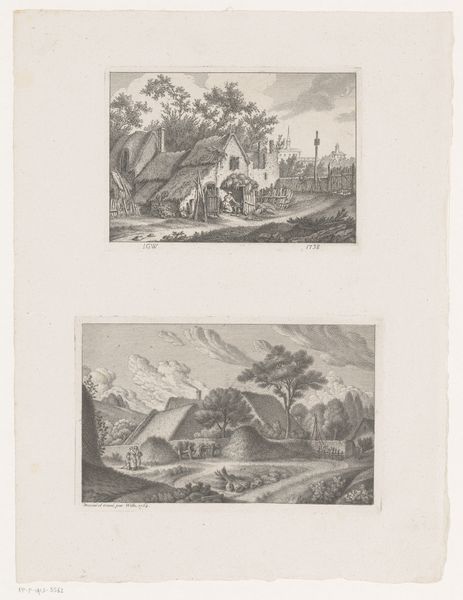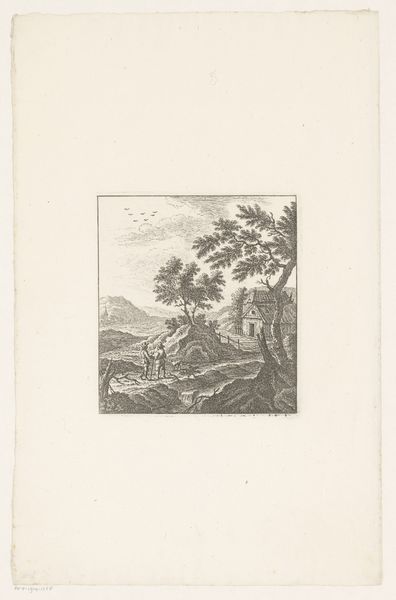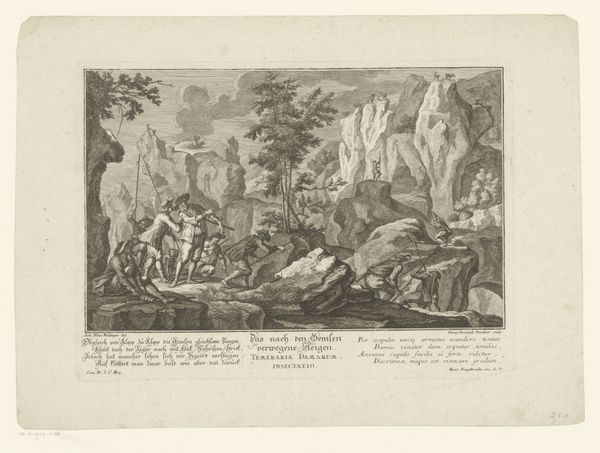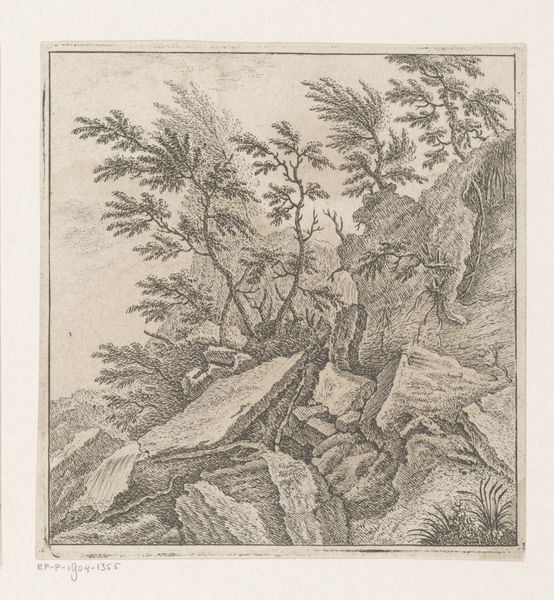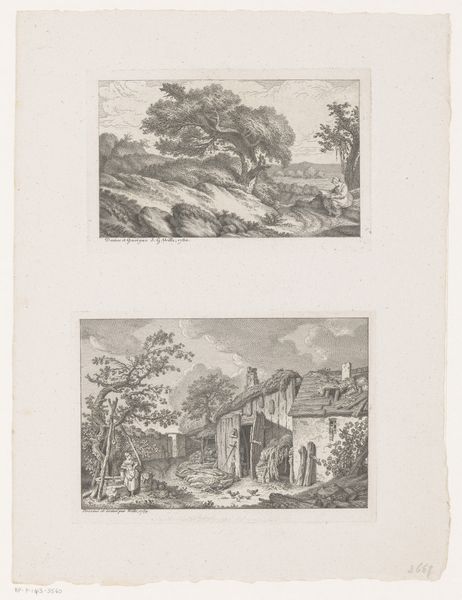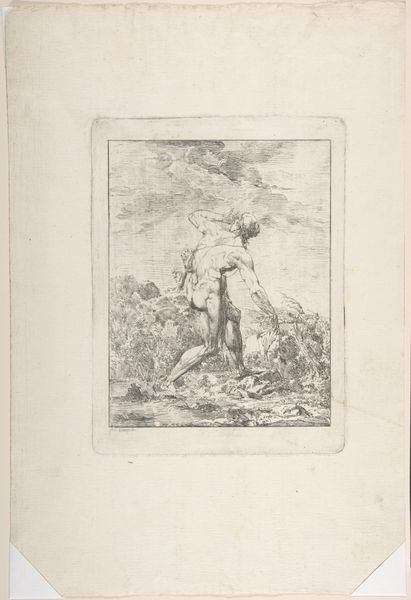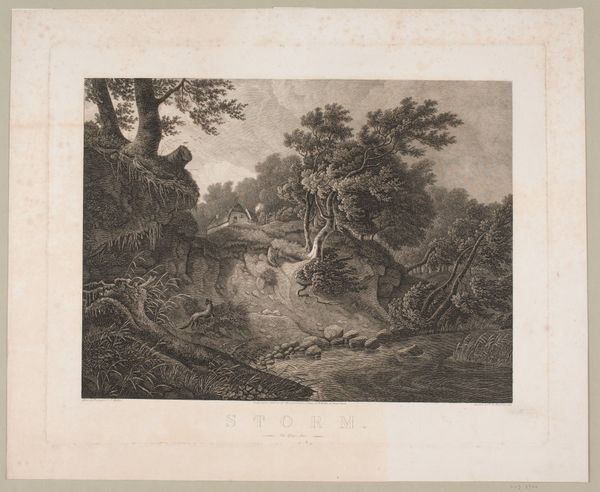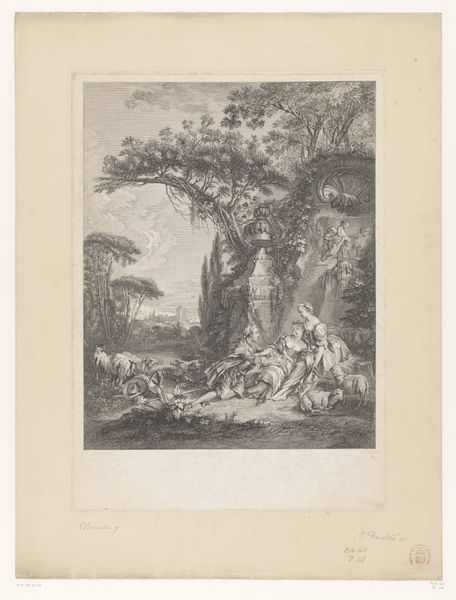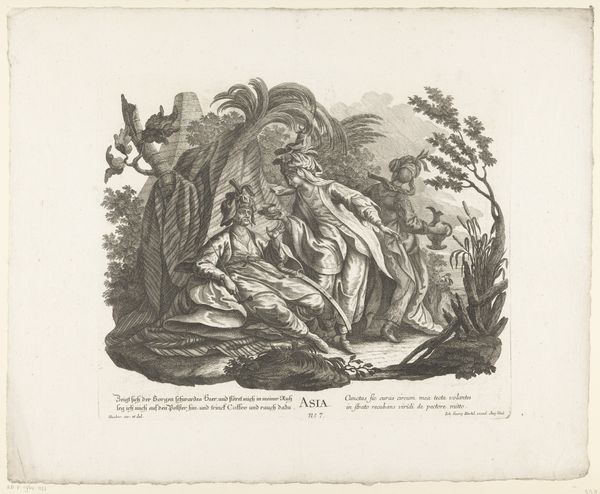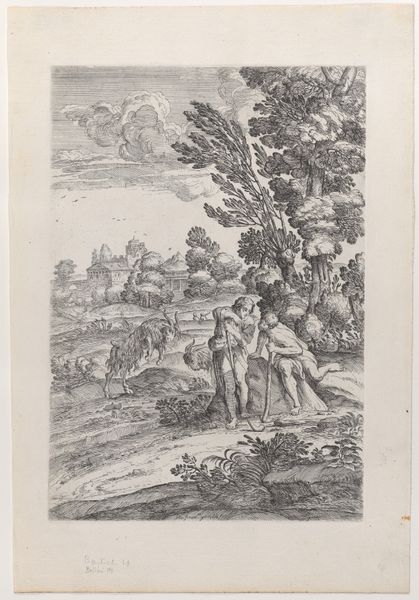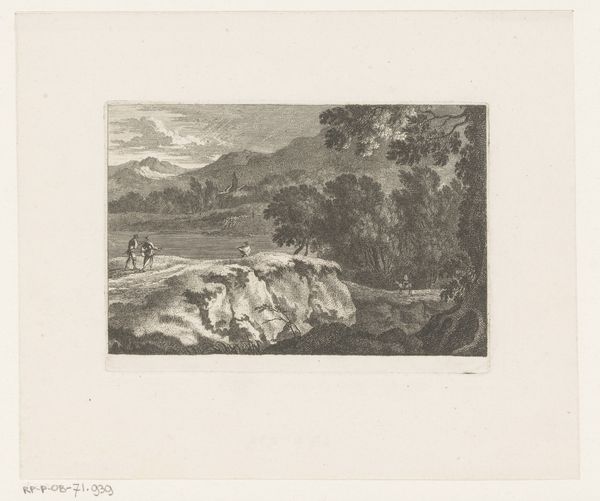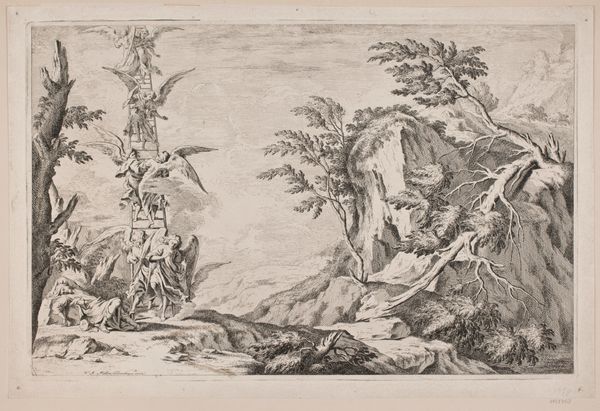
Reizigers langs een pad en een visser en jonge vrouw bij een waterval 1756 - 1760
0:00
0:00
drawing, print, engraving
#
pencil drawn
#
drawing
#
baroque
# print
#
pencil sketch
#
landscape
#
waterfall
#
figuration
#
line
#
pencil work
#
engraving
Dimensions: height 124 mm, width 113 mm, height 108 mm, width 148 mm
Copyright: Rijks Museum: Open Domain
Editor: This print, “Reizigers langs een pad en een visser en jonge vrouw bij een waterval,” made between 1756 and 1760 by Johann Georg Wille, uses engraving to depict two landscape scenes. I'm struck by the attention to detail in the rendering of the natural world and how people interact within these environments. What stands out to you? Curator: The means of production of this piece speak volumes. The meticulous nature of engraving, the skilled labor involved in its creation, positions this work within a specific economy of image-making. Consider the accessibility of prints at the time. What kind of consumption were these landscapes facilitating? Editor: That's fascinating. I hadn't thought about its availability to consumers. I suppose engravings made landscape scenes available to people who perhaps couldn’t visit those places themselves, but also to a market that was very concerned with aesthetics and the 'picturesque.' Curator: Precisely. Wille isn't simply depicting nature; he’s also participating in and shaping a culture of consumption around idealized landscapes. How might we see this in relation to emerging colonial and trade networks? Are these 'empty' landscapes, or do they hint at the raw materials and exploitative labor practices enabling that trade? Editor: So you're suggesting we look at the absence of overt signs of labor as significant. These idealized scenes perhaps mask the more complex economic realities of the time? The waterfalls aren't just beautiful; they suggest potential power sources. The people seem like actors performing the role of appreciating this land... Curator: Exactly! Think about how this approach can shift our understanding of art history, drawing our attention away from aesthetics and into the world of materials, processes, and power dynamics. Editor: I never would have looked at this print that way on my own! Thanks for showing me that we can analyze images in terms of production and consumption to see these hidden meanings. Curator: Gladly! It is important to move beyond formal elements and appreciate the societal structures.
Comments
No comments
Be the first to comment and join the conversation on the ultimate creative platform.
